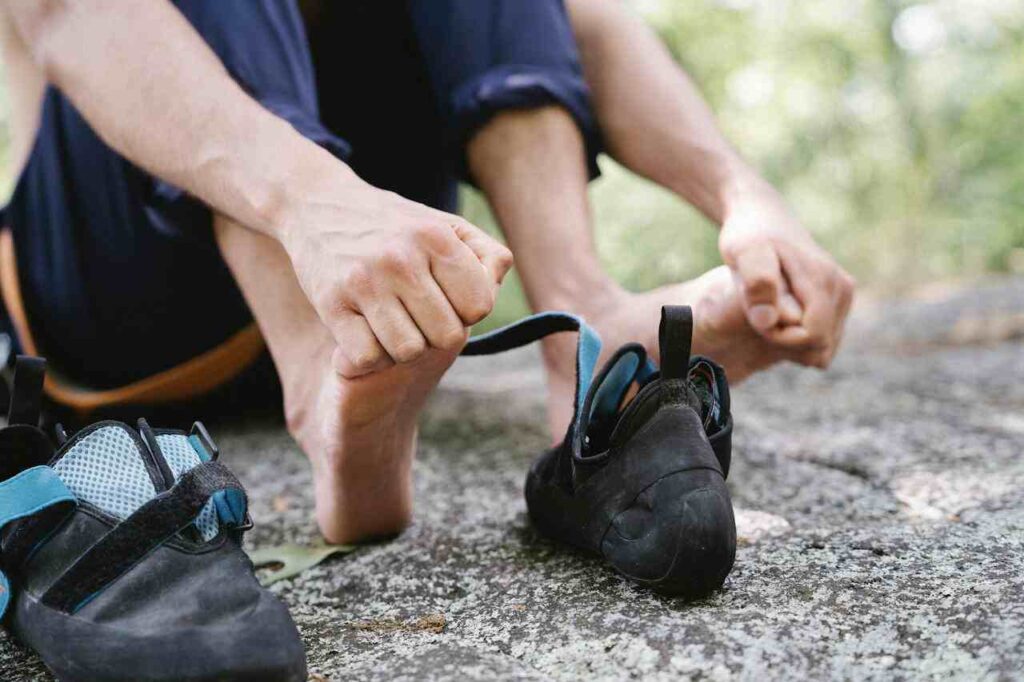Plantar fasciitis is a common condition that causes pain in the heel and bottom of the foot. It occurs when the plantar fascia, a thick band of tissue that connects the heel bone to the toes, becomes inflamed. This inflammation can be caused by overuse, improper footwear, or even genetics.
If you’re suffering from plantar fasciitis, you know how debilitating it can be. The good news is that there are steps you can take to alleviate the pain and heal your feet in just one week. In this article, we will outline an effective treatment plan that will help you get back on your feet in no time.
1. Rest and Ice
The first step in curing plantar fasciitis is to give your feet some much-needed rest. Avoid high-impact activities such as running or jumping that can aggravate the condition. Instead, opt for low-impact exercises like swimming or cycling to keep your body active without putting additional strain on your feet.
In addition to rest, icing your feet can help reduce inflammation and relieve pain. Apply an ice pack to the affected area for 15-20 minutes several times a day. This will help numb the area and reduce swelling.
2. Stretching Exercises
Stretching exercises are crucial in treating plantar fasciitis. They help improve flexibility and strengthen the muscles and ligaments in your feet. Here are two simple stretches you can do:
- Calf Stretch: Stand facing a wall with one foot in front of the other. Keep your back leg straight and lean forward, bending your front knee until you feel a stretch in your calf muscles. Hold for 30 seconds and repeat on both sides.
- Towel Stretch: Sit on the edge of a chair with your legs stretched out in front of you. Place a towel around the ball of your foot and gently pull back, feeling a stretch in the arch of your foot. Hold for 30 seconds and repeat 3 times.
3. Supportive Footwear
Wearing proper footwear is essential when dealing with plantar fasciitis. Look for shoes with good arch support and cushioning to reduce the strain on your feet. Avoid high heels or flat shoes that offer little support.
If you’re unable to find suitable shoes, consider using orthotic inserts. These inserts provide additional support and help distribute pressure evenly across your feet.
4. Massage and Self-Care
Massaging the affected area can help relieve pain and promote healing. Use a tennis ball or a frozen water bottle to roll under your foot, applying gentle pressure. This will help stretch out the plantar fascia and increase blood flow to the area.
Taking care of your overall health can aid in the healing process. Maintain a healthy weight to reduce stress on your feet, and consider taking over-the-counter pain relievers if approved by your healthcare professional.
5. Consult a Healthcare Professional
If your plantar fasciitis persists or worsens after following these self-care measures, it’s important to consult a healthcare professional. They may recommend additional treatments such as physical therapy, custom orthotics, or even corticosteroid injections to alleviate pain and assist in your recovery.
Remember, everyone’s journey to recovery is different, and it may take longer than a week to fully cure plantar fasciitis. Be patient with yourself and follow the advice of your healthcare provider.
Plantar fasciitis can be a painful condition, but with the right approach, you can alleviate the pain and heal your feet within a week. By resting and icing, performing stretching exercises, wearing supportive footwear, practicing self-care, and consulting a healthcare professional if needed, you’ll be well on your way to a pain-free life. Take the necessary steps today and regain your mobility and comfort.
Read Also:



